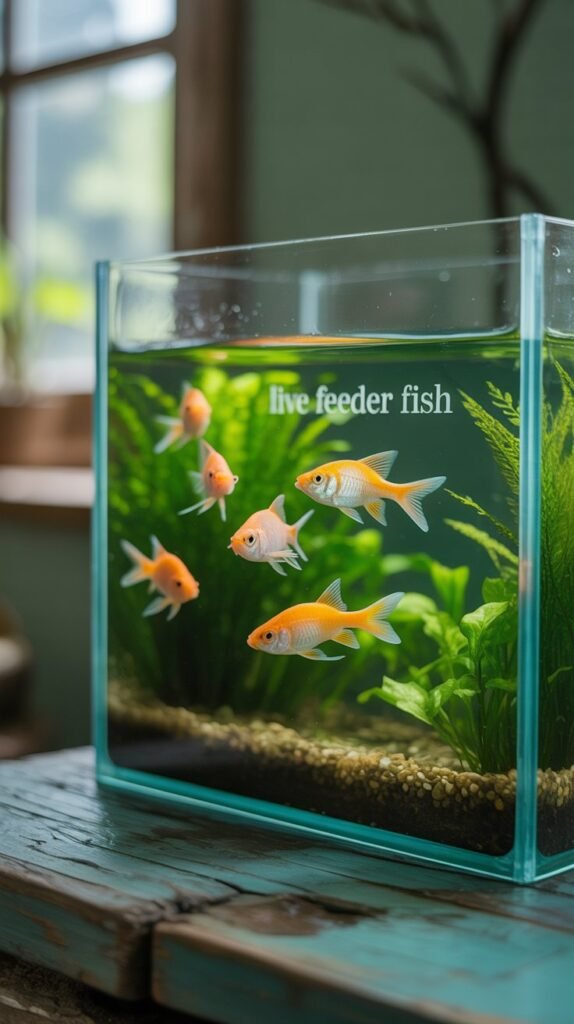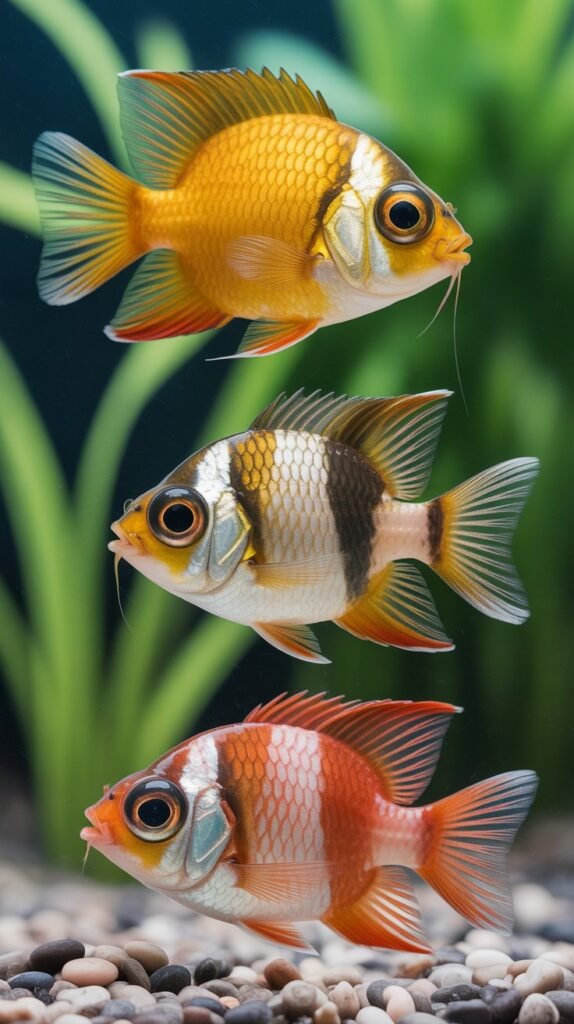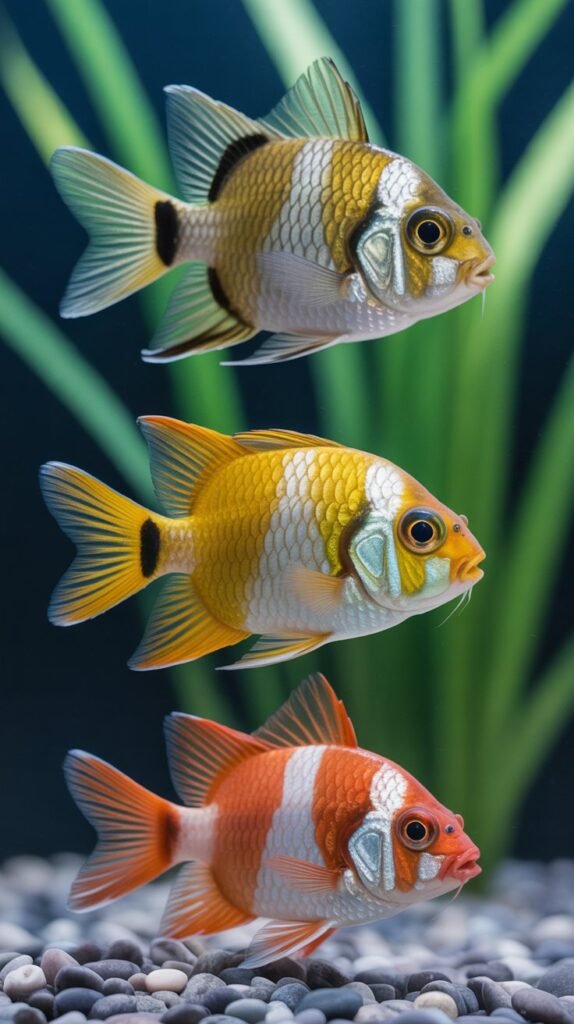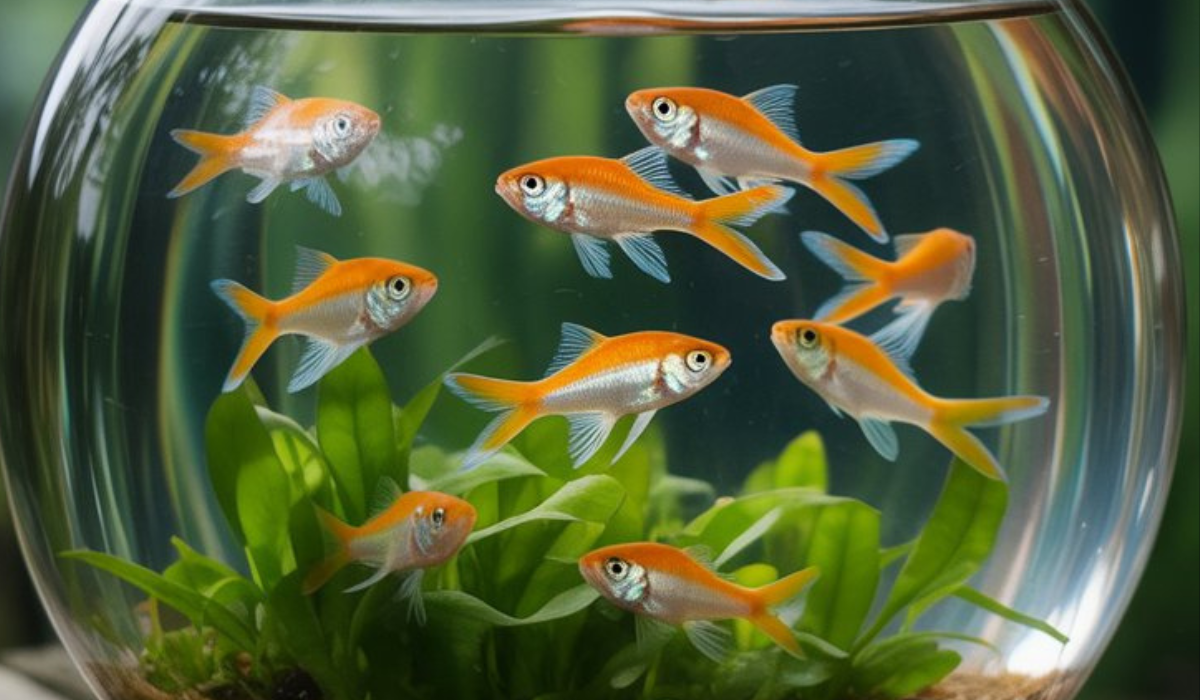Live feeder fish play an essential role in the diet and enrichment of many predatory fish species, both in aquariums and outdoor ponds. These small, live fish are used as prey to provide nutrition and stimulate natural hunting instincts in larger carnivorous species such as Arowanas, Oscars, Piranhas, and catfish. While using live feeder fish can be highly beneficial, it’s also a practice that requires careful management to ensure the health and safety of both the feeder and the predator fish.
This detailed guide will help you understand everything about live feeder fish — from their types and benefits to breeding, feeding, and disease prevention. Whether you are a hobbyist, breeder, or aquarist managing a predator tank, understanding the responsible use of live feeder fish will lead to healthier and more natural aquatic environments.
What Are Live Feeder Fish?
Live feeder fish are small fish specifically bred and raised to be fed to larger predatory species. These fish are commonly available at pet stores and aquarium supply shops because they serve as an important live food source for carnivorous fish, reptiles, amphibians, and even some birds. The primary purpose of live feeder fish is to mimic the natural diet of predators, providing them with the opportunity to chase and hunt, which can improve their overall health and mental well-being.

Common types of live feeder fish include guppies, mollies, goldfish, rosy red minnows, and fathead minnows. They are typically inexpensive, easy to breed, and widely available, making them a popular choice for fish keepers around the world.
Why Use Live Feeder Fish?
There are several reasons aquarists choose live feeder fish instead of or in addition to frozen or processed foods. One of the main advantages is that live prey stimulates the natural hunting instincts of predator fish. For many species, such as pike cichlids, snakeheads, or arowanas, hunting behavior is part of their biology. Live food helps reduce boredom, promotes exercise, and keeps the fish active and alert.
Nutritionally, live feeder fish provide a natural balance of protein, fats, and micronutrients that support muscle development, coloration, and immune strength. When feeder fish are gut-loaded — meaning fed with nutrient-rich food before being eaten — they become even more beneficial for the predators. This makes them not only an instinctual choice but also a highly nutritional one.
Another benefit of using live feeder fish is enrichment. Watching predator fish chase and capture live prey can be an exciting and natural experience for aquarists, giving insight into how fish behave in the wild. It also provides an outlet for territorial or aggressive fish to display their instincts in a controlled environment.
Common Types of Live Feeder Fish
There are several species that make excellent live feeder fish depending on the size and diet of your predator fish. Below are some of the most commonly used species and their characteristics.
Guppies are among the most popular live feeder fish. They are small, hardy, and reproduce quickly, making them a cost-effective and sustainable choice. Guppies are ideal for smaller predators like bettas, dwarf cichlids, or baby arowanas.
Mollies are another favorite choice. They thrive in both freshwater and brackish conditions and are known for their ability to breed easily. Mollies are slightly larger than guppies and provide more nutritional value for medium-sized predatory fish.
Goldfish are one of the most recognizable feeder fish species. They are affordable and widely available. However, they should be used sparingly because of their high fat content and the presence of thiaminase, an enzyme that can deplete vitamin B1 in predator fish if fed excessively.
Rosy red minnows are hardy, fast-breeding fish that make excellent feeders. They are rich in nutrients and are disease-resistant, making them a safer option for predator tanks. They are suitable for larger carnivorous fish like Oscars or bass.
Fathead minnows are slow swimmers, making them easy prey for larger fish. They are ideal for pond environments and can also be bred easily in captivity.
Tilapia fry are another excellent feeder fish for large predators such as catfish, snakeheads, and peacock bass. They are nutrient-rich and breed prolifically, making them a sustainable option for large aquariums or ponds.
Breeding Feeder Fish at Home

Many aquarists prefer to breed their own live feeder fish rather than buy them. Breeding your own feeders ensures better quality, prevents the introduction of diseases, and saves money in the long run. To start, choose a hardy and fast-breeding species like guppies, mollies, or minnows.
Set up a dedicated breeding tank of around 10–20 gallons with a stable temperature and clean water conditions. Provide hiding spots for fry using live plants or spawning mops to increase their survival rate. Feed the breeding fish with high-quality flakes, frozen foods, or live daphnia to encourage healthy egg production.
Once the fry hatch, it’s best to separate them from adults to prevent cannibalism. Fry grow quickly on a diet of crushed flakes, infusoria, and baby brine shrimp. Within a few weeks, they’ll be large enough to be introduced into your predator tank.
Nutritional Benefits of Live Feeder Fish
The nutritional value of feeder fish varies depending on how they are raised. Feeder fish provide an excellent source of protein, which is essential for muscle growth and tissue repair. They also supply essential fatty acids that improve skin, scales, and coloration. Vitamins such as A, D, E, and B-complex, as well as minerals like calcium and phosphorus, support bone strength and immune function.
However, the nutritional quality can decrease if the feeder fish are poorly fed or kept in unsanitary conditions. This is why gut-loading — feeding feeder fish with nutrient-rich foods before offering them to predators — is highly recommended. Some good gut-loading foods include spirulina, high-quality pellets, algae flakes, and brine shrimp.
By properly feeding your feeder fish before use, you not only increase their nutritional value but also ensure your predator fish receive a complete and healthy diet.
Risks and Concerns with Live Feeder Fish
While there are numerous benefits, using live feeder fish also comes with potential risks. One of the biggest concerns is disease transmission. Feeder fish purchased from crowded or unsanitary sources often carry parasites, bacteria, or fungal infections that can spread rapidly in your main tank. To avoid this, always quarantine new feeder fish in a separate tank for at least two weeks and observe for signs of illness before feeding them to predators.
Another issue is nutritional imbalance. Some fish, like goldfish, have too much fat and thiaminase, which can lead to long-term health problems if they are the primary food source. To prevent this, vary the diet of your predators by alternating between live, frozen, and pellet foods.
Stress and injury can also occur during live feedings. Aggressive predators may injure themselves or tank mates while hunting. It’s best to monitor feedings closely and avoid overfeeding.
Lastly, there are ethical considerations. Some aquarists choose to avoid live feeding because it involves predation. In such cases, frozen or prepared alternatives can still provide adequate nutrition without using live prey.
Alternatives to Live Feeder Fish

If you prefer not to use live feeder fish or want to mix up your predator’s diet, several high-quality alternatives are available. Frozen foods such as bloodworms, krill, shrimp, and silversides provide excellent nutrition without the risk of disease. Freeze-dried foods like tubifex worms or brine shrimp are convenient and long-lasting.
Pellets made specifically for carnivorous fish, such as Arowana sticks or cichlid pellets, are another excellent option. These are nutritionally balanced and fortified with vitamins and minerals. You can also create homemade fish food by blending seafood, vegetables, and supplements into small cubes for freezing.
Using a variety of food sources ensures that your predator fish get all essential nutrients while reducing the need for live feeding.
Tips for Safe and Effective Live Feeding
When feeding live fish, always use healthy and disease-free feeders. Never take feeder fish directly from the wild, as they may carry harmful pathogens or pollutants. Instead, purchase from reputable breeders or breed your own stock.
Feed live fish sparingly. Too many live feeders can cause aggression, obesity, or over-reliance on live prey. A balanced approach is to alternate between live, frozen, and pellet foods.
Always remove uneaten feeder fish after a feeding session. Leftover fish can stress out the predator or contribute to water pollution through waste and decomposition.
Finally, maintain proper tank hygiene. Regular water changes, good filtration, and clean feeding equipment are essential to prevent ammonia buildup and bacterial infections.
Ethical Considerations
While live feeding is a natural process, some aquarists and animal welfare groups express ethical concerns over using live animals as food. The best practice is to use live feeders only when necessary — for example, when training young predators to recognize food or when a fish refuses to eat anything else. Breeding your own feeder fish ensures they live in clean and humane conditions before being used for feeding, which helps balance ethical responsibility with biological necessity.
Conclusion
Live feeder fish can play an important role in maintaining the health, vitality, and natural behavior of predator fish. When used responsibly, they offer high nutritional value, mental stimulation, and a more natural feeding experience. However, they must be sourced or bred carefully to avoid introducing disease or nutritional imbalance.
Whether you choose to use live feeders or alternatives, the key is balance and proper care. Understanding the biology, feeding habits, and ethical considerations of live feeding will help you make informed choices for your aquatic pets, ensuring a healthy and thriving ecosystem in your aquarium or pond.
FAQs About Live Feeder Fish
1. Are live feeder fish safe for all predatory fish?
Not always. Some feeders may carry diseases or parasites, so quarantine is essential before feeding them to predators.
2. Can I breed my own feeder fish at home?
Yes. Breeding guppies, mollies, or minnows is easy and cost-effective, ensuring you have a constant, healthy supply.
3. How often should I feed live fish to my predators?
Once or twice a week is enough for most species. Alternate with pellets or frozen foods for a balanced diet.
4. What’s the best live feeder fish for beginners?
Guppies and rosy red minnows are great starter options because they are hardy, easy to breed, and safe for most predators.
5. Are there alternatives to live feeder fish?
Yes. Frozen foods, freeze-dried options, and high-quality pellets can provide excellent nutrition without using live prey.
6. Do live feeder fish carry diseases?
If purchased from poor sources, yes. Always quarantine feeder fish before use and avoid overcrowded supplier tanks.
7. Is feeding live fish ethical?
Opinions vary. Many aquarists view it as natural, while others prefer frozen or prepared food. Breeding your own feeders humanely can help address ethical concerns.

